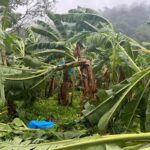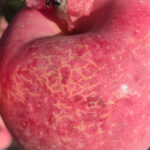Ecuadorian banana industry could lose 128,000 acres due to El Niño

Ecuador’s Association of Banana Growers of El Oro has warned about the possible loss of up to 125,000 productive acres due to the imminent impact of the El Niño weather phenomenon.
The Ecuadorian banana industry has had three years of major complications. After the pandemic, maritime freight rates skyrocketed, putting serious pressure on exports.
The beginning of the war between Russia and Ukraine also had an impact on the sector, generating an increase in costs of fertilizers, construction materials and other agricultural inputs.
FreshFruitPortal.com spoke to Leonidas Estrada, president of the Regional Corporation of Ecuadorian Banana Growers (AGROBAN) about the possible consequences of this climatic phenomenon, the preventive measures that have been implemented and how exports of one of Ecuador's star products could be affected.
Estrada explains that all these factors combined to create an unfavorable scenario for the industry, now vulnerable to the possibility of flooding that comes with El Niño.
Related articles: Ecuadorian banana exports down at start of the year
A bleak forecast
Although there is no certainty as to when or with what intensity El Niño will impact Ecuador, AGROBAN estimates that the phenomenon will be at its peak between September and December.
"The plantations are not well nourished (due to the increase in fertilizer costs) and the infrastructure is not at 100% of its capacity, since there hasn’t been time, nor resources to carry out the corresponding maintenance of the irrigation systems," he explains.
Estrada predicts that, if El Niño manifests at full capacity, floods could damage between 98,000 to 128,000 acres of farmland.

Leonidas Estrada, AGROBAN President.
Ecuador currently has close to 500,000 acres used for banana production, which yield up to 7.5 million boxes a week.
“We are looking at a 25% drop in production, which would translate to weekly losses of up to $17 million dollars for the industry,” he says.
AGROBAN is working together with authorities to ensure that anti-flooding systems in the region are working properly.
Estrada explains that while excess water could very well boost productivity, current conditions prevent growers from implementing adequate measures to safely take advantage of the rains.
According to Estrada, maintaining drainage systems is crucial, as rainfall can damage crops in two different ways:
First, the impact of the water exerts physical damage on the plants, potentially causing breakage and premature fruit drop.
Additionally, if the excess water remains on the soil for more than 24 to 48 hours, the ripening process is affected and the product cannot withstand shipping, arriving overripe at destination.
"Unfortunately, the cash flow that the producer has today is insufficient and the state and banking entities are not providing them with any more tools. So, the problem is that the producer's hands really are tied," he says.
Rice, cocoa, African palm, some corn and certain shrimp farming areas along the gulf could also be affected by the climate phenomenon, but the banana sector is by far the most vulnerable one.











































